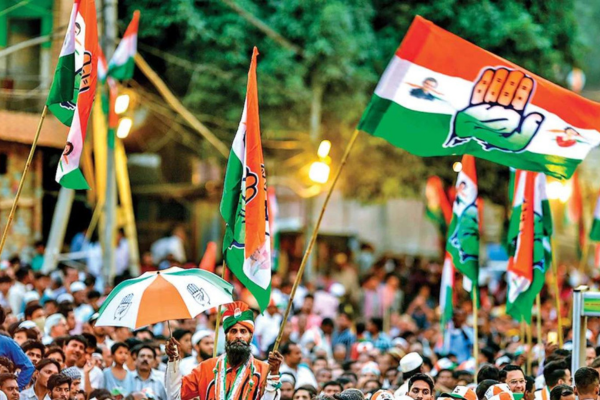As the Madhya Pradesh Assembly Elections approach, the Congress, viewed as the primary contender to challenge the incumbent Bharatiya Janata Party (BJP) rule, finds itself in a complex electoral landscape. The Congress will be contending against its INDIA coalition partners in 92 out of the state’s 230 Assembly constituencies. Among these, 26 seats will see the Congress competing against not just one but two INDIA allies: the Samajwadi Party (SP) and the Aam Aadmi Party (AAP). Additionally, in three other constituencies, the Congress will be pitted against candidates from AAP and the Janata Dal (United).
The Samajwadi Party, JD(U), and AAP have declared their candidates in these constituencies, as seat-sharing negotiations with the Congress proved unsuccessful. Notably, among the Congress’ INDIA coalition partners, the Arvind Kejriwal-led AAP has fielded the highest number of candidates, standing at 70, followed by the SP with 43 candidates and the JD(U) with 10 candidates, as of figures available till October 29.
Among the 92 constituencies where the Congress is set to compete, nine witnessed narrow losses for the party in the 2018 Assembly polls. These include seats like Gwalior South (lost by 121 votes), Jabalpur North (578 votes), Damoh (798 votes), Rajnagar (732 votes), Picchore (2,675 votes), Gunnour (1,984 votes), Prithvipur (4,620 votes), and Petlawad (5,000 votes). In six other constituencies, the Congress narrowly lost in 2018, including Chandla (defeat by 1,177 votes), Nagod (1,234 votes), Maihar (2,984 votes), Singarouli (3,726 votes), Jabera (3,485 votes), and Indore-5 (1,133 votes).
In the previous Assembly elections, the SP contested in 52 seats and managed to win one, while the AAP failed to secure a seat but secured a vote share of 0.66 percent. The JD(U) did not participate in the 2018 polls.
Madhya Pradesh’s 230 constituencies will go to polls in a single phase on November 17, with the Election Commission scheduled to announce the results on December 3.
The presence of INDIA coalition allies fielding candidates in these constituencies has the potential to disrupt the Congress’s electoral calculations, particularly in seats where a close contest is expected. This is of significance, as pre-poll surveys have indicated a closely fought battle between the two national parties in the state. According to the India TV-CNX opinion poll released on October 27, the BJP is projected to secure victory in 115 seats, while the Congress is predicted to win 110 constituencies.
As the election campaign unfolds, the Congress will need to strategize effectively to navigate the complex political landscape and secure a competitive edge against both its main rival, the BJP, and its own INDIA coalition partners. The Madhya Pradesh Assembly Elections will be closely watched, as the outcomes may have implications for the state’s political landscape and governance.














